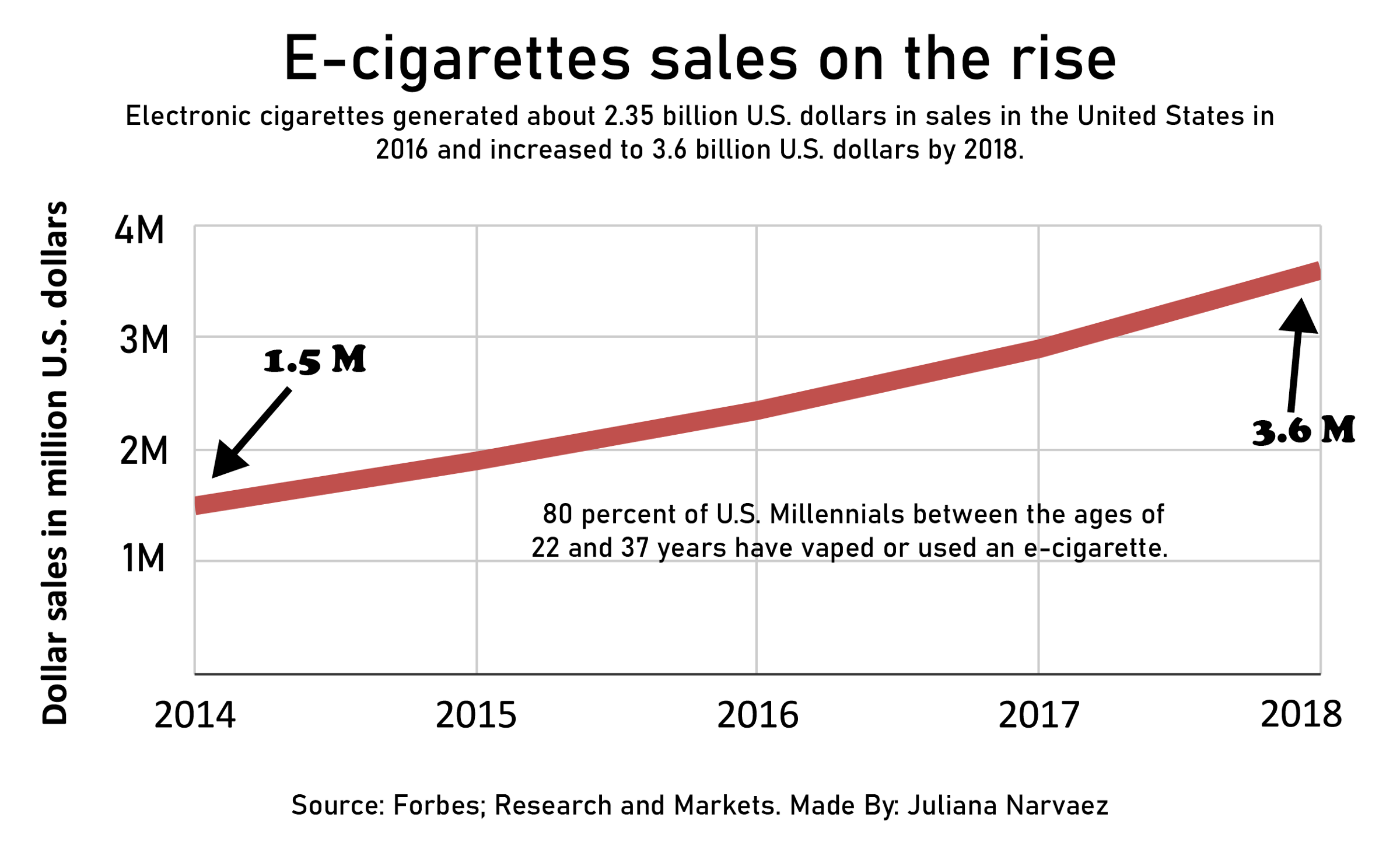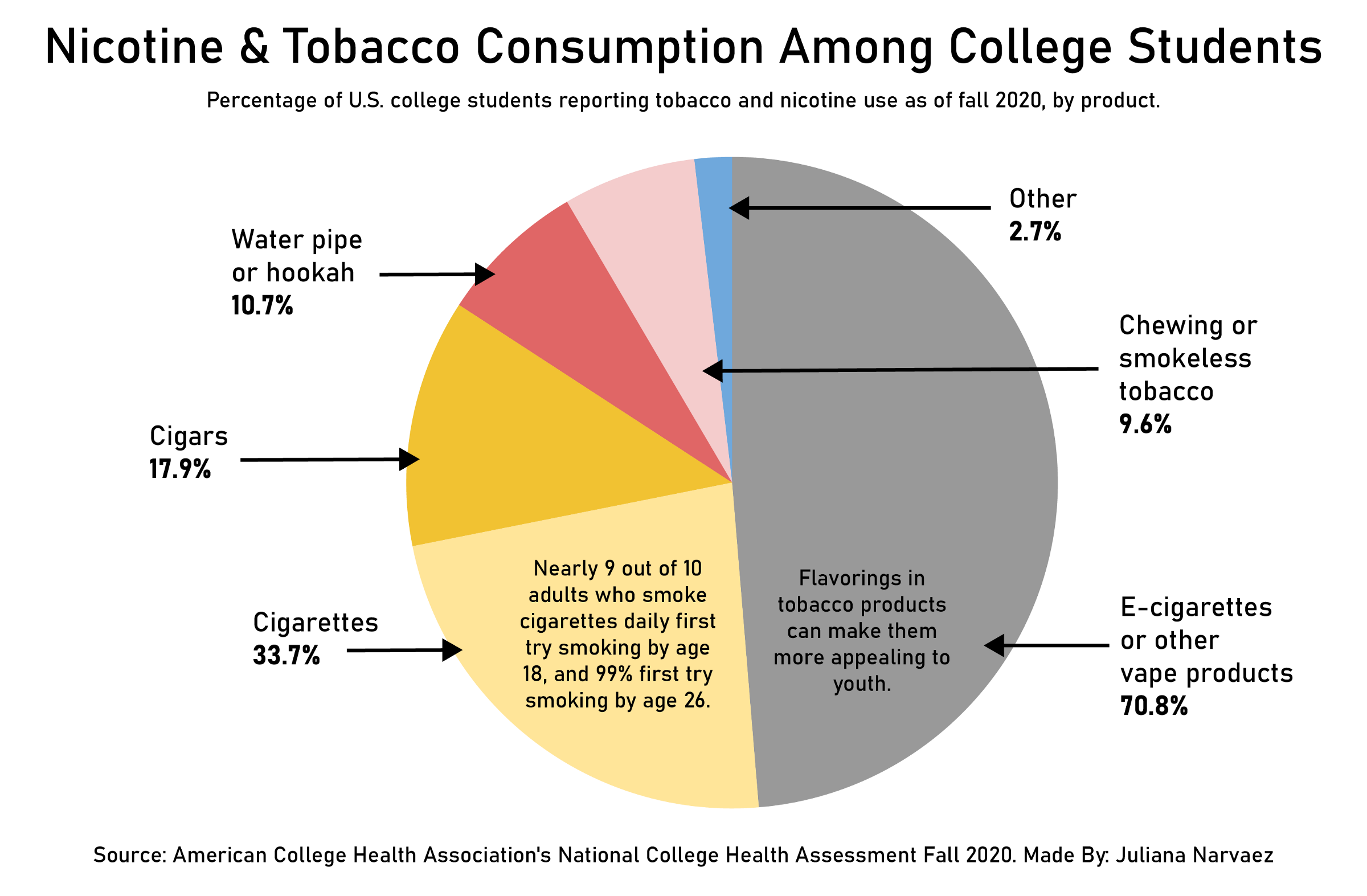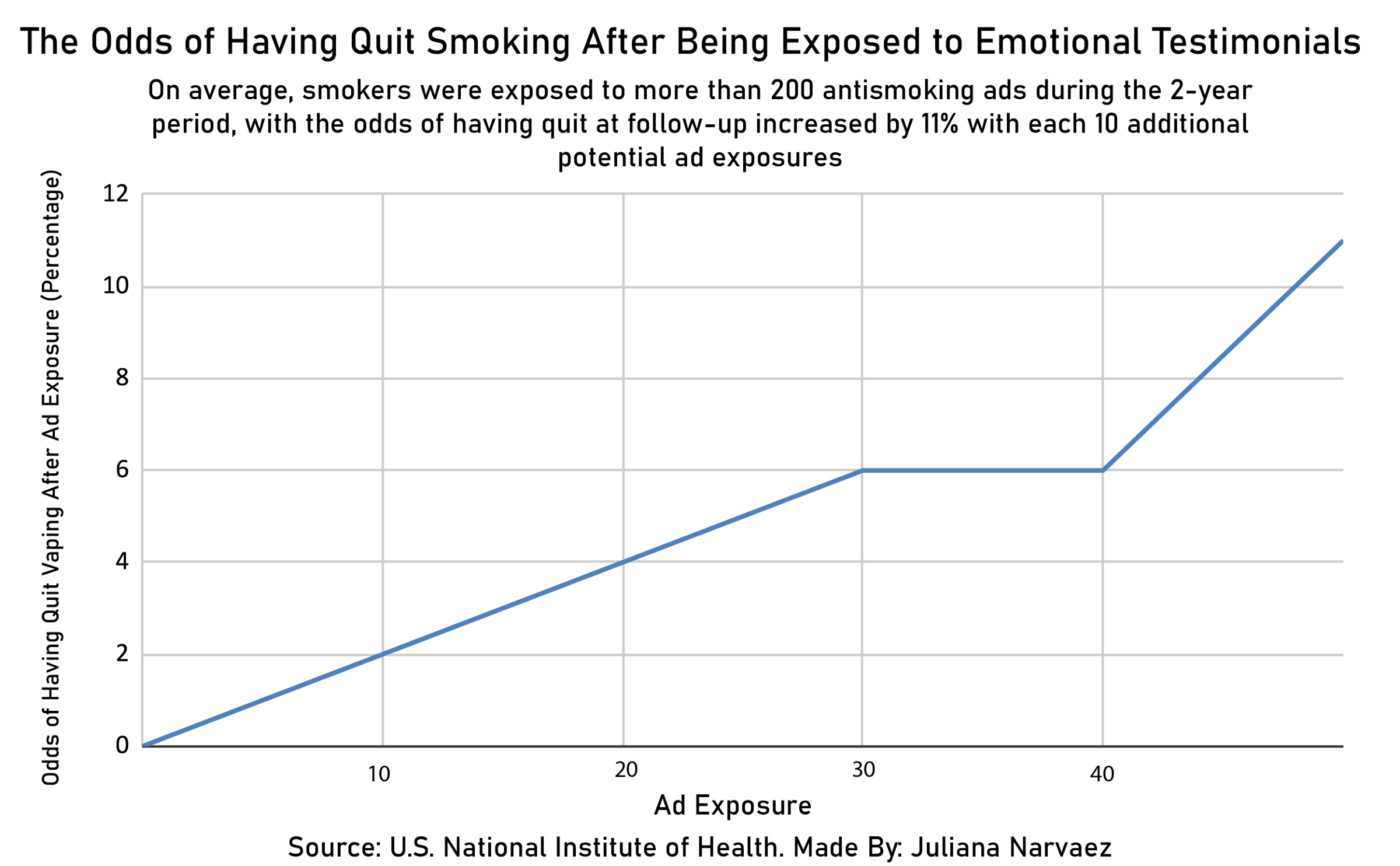Many vape brands target their market audiences by offering fruity flavors. The National Institute of Drug Abuse reported an alarmingly high rate of high schoolers using e-cigarettes.
“From 2017 to 2019, the percentage of teenagers who said they had vaped nicotine in the past 12 months roughly doubled for eighth-graders from 7.5% to 16.5%, for 10th graders from 15.8% to 30.7%, and for 12th graders from 18.8% to 35.3%. In 2020, the rates held steady at a respective 16.6%, 30.7%, and 34.5%” (The National Institute of Drug Abuse, 1).

An electronic cigarette is a device used to smoke nicotine, tobacco, or THC products. These devices consist of an atomizer, or a battery used as a power source and a container that holds the substance. Instead of inhaling smoke, the user inhales vapor. Because of this, using an e-cigarette is often referred to as “vaping.”
Many nicotine and tobacco vaping products were created with the intention of helping cigarette smokers quit. However, vaping has now found its way to teenagers and young adults who may have never smoked cigarettes before. This has caused a large, growing population of teenagers and young adults to start vaping and get hooked on nicotine and tobacco.

With vaping on the rise and more young adults reporting nicotine addictions, anti-smoking ads are now targeting the youth to get them to quit. However, many anti-vaping ads prove to be ineffective in getting young adults to stop. Instead of having these ads list the negatives of vaping, one powerful technique in getting the youth to stop is targeting their ads towards personal testimonials of people who quit.

The U.S. National Institute of Health found that “emotionally evocative ads and ads that contain personalized stories about the effects of smoking and quitting hold promise for efforts to promote smoking cessation.”
In order to evaluate the effectiveness of personal testimonials in ads, it’s essential to understand why so many young adults started smoking. According to the CDC, there are many factors that come into play when analyzing this epidemic. First off, many young adults begin due to social and environmental factors. These could include seeing actors on TV or in movies using vaping products or simply being around friends and social groups that vape.
Other factors include biological reasons. According to a CDC report, “There is evidence that youth may be sensitive to nicotine and that teens can feel dependent on nicotine sooner than adults.” Vaping flavors also influence the growing number of people who report vaping. Electronic cigarette companies tend to use flavors such as blueberry or apple to attract people to use their products. Finally, according to the same CDC report, mental health can play a role in young adults smoking, as there is a correlation between depression, stress, anxiety, and youth smoking.
The American College Health Association found that 70.8% of college students who consume nicotine or tobacco do so through electronic cigarettes, as compared to the 33% of students who report smoking cigarettes. This means that more young adults are using vaping devices, which has caused e-cigarette sales to rise. According to Forbes, the e-cigarette market generated about 2.35 billion dollars in the U.S. in 2016 and has increased to 3.6 billion dollars in 2018.
Most young adults respond to the personal testimonials of others in order to help them quit. Sean Murphy, a 22-year-old smoker who has been vaping for four years, reported that traditional anti-smoking ads including factual evidence of the negative effects of vaping don’t encourage him to quit, since he is already aware of the effects he is doing to his body.
Instead, Murphy finds that ads that evoke personal testimonials for smokers make him want to quit, and if his friends were to quit smoking, he would also want to stop.
Therefore, it may be more effective for ads to focus on telling the stories of how others quit and provide a call to action to get the youth to stop and encourage their friends to do the same.
































